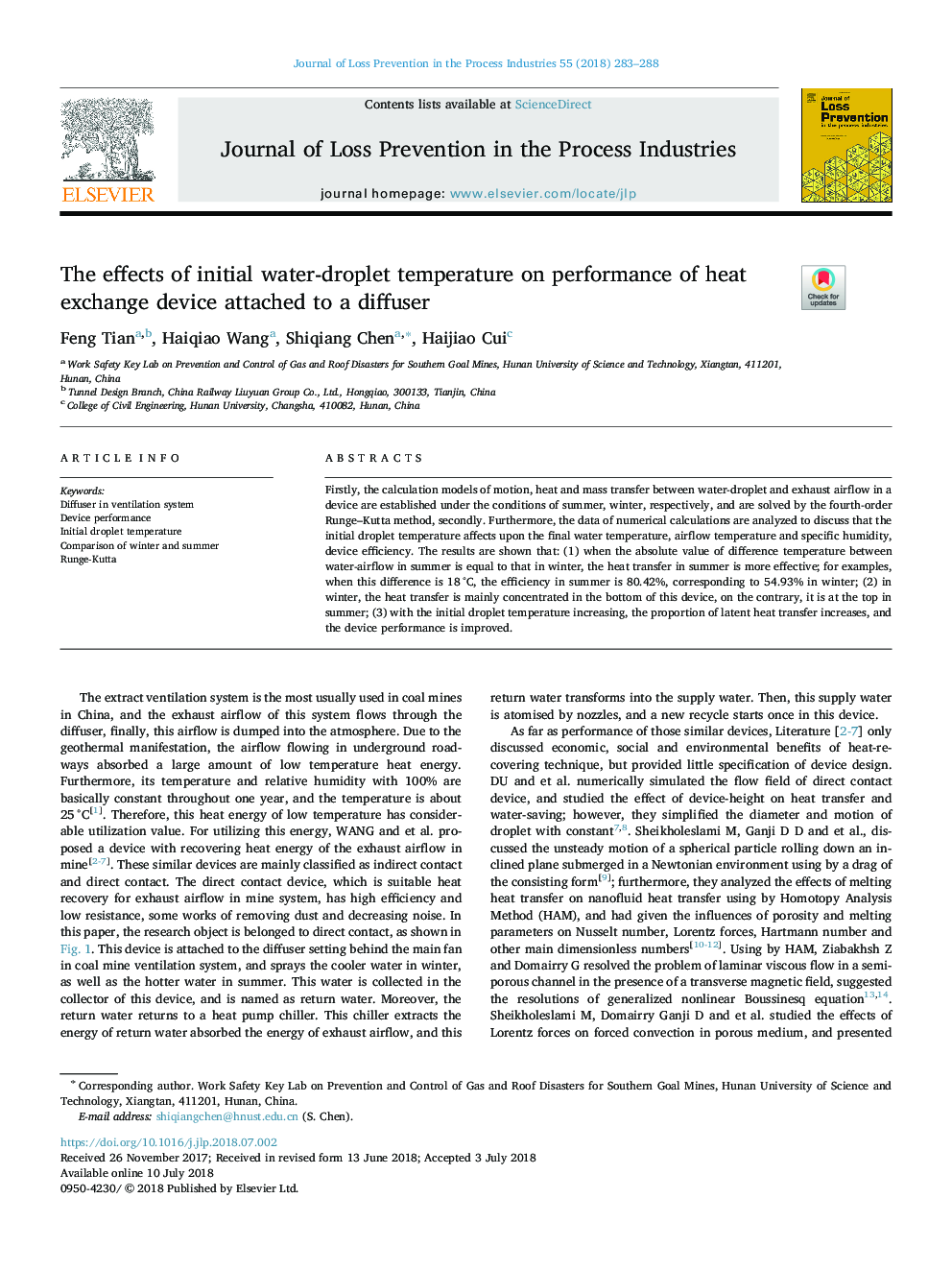| Article ID | Journal | Published Year | Pages | File Type |
|---|---|---|---|---|
| 6972794 | Journal of Loss Prevention in the Process Industries | 2018 | 6 Pages |
Abstract
Firstly, the calculation models of motion, heat and mass transfer between water-droplet and exhaust airflow in a device are established under the conditions of summer, winter, respectively, and are solved by the fourth-order Runge-Kutta method, secondly. Furthermore, the data of numerical calculations are analyzed to discuss that the initial droplet temperature affects upon the final water temperature, airflow temperature and specific humidity, device efficiency. The results are shown that: (1) when the absolute value of difference temperature between water-airflow in summer is equal to that in winter, the heat transfer in summer is more effective; for examples, when this difference is 18â¯Â°C, the efficiency in summer is 80.42%, corresponding to 54.93% in winter; (2) in winter, the heat transfer is mainly concentrated in the bottom of this device, on the contrary, it is at the top in summer; (3) with the initial droplet temperature increasing, the proportion of latent heat transfer increases, and the device performance is improved.
Keywords
Related Topics
Physical Sciences and Engineering
Chemical Engineering
Chemical Health and Safety
Authors
Feng Tian, Haiqiao Wang, Shiqiang Chen, Haijiao Cui,
